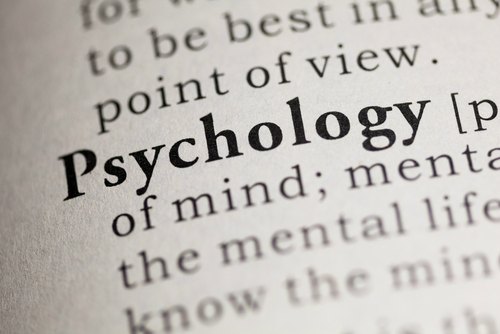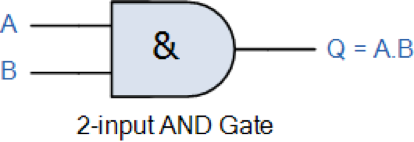Introduction
Well by now if you have read some of these articles I think it’s clear that ‘old school approaches to physical and psychological health has changed somewhat than what was practised 50 years ago which is why as a society we are ‘rolling with the devil’. It is a one way street to Dante’s inferno unless something fundamental changes. Historically, examples of fundamental change has occurred such as The Dissolution of Monasteries in the United Kingdom enacted under the realm of King Henry VIII in 1536 when he appropriated all church income, and disposed of their assets (selling off of property etc) by the passing of the Act of Supremacy in Parliament in 1534. This made Henry Supreme head of the church, which meant the dissolution of 900 churches and the resettling of 12,000 people. The French revolution was another fundamental change in 1789 which led to the dissolution of the French Monarchy and the execution of Louis XVI in 1793. The Russian Revolution lead by Vladimir Ilyich Ulyanov (Lenin) in 1917 lead to the dissolution of the Russian Tsars dynasty and the needless execution of the Romanov family.
Society does not have to go to such extreme measures, although for reform to occur government bodies such as the American Medical Association, the National Institute for Health and the National Institute for Mental Health would have to lead the way, but somehow I don’t see that happening unless the population simply refused conventional health care. Well this seems pretty straight forward but there are several obstacles which are human (in) nature Greed and Power. Since our subject is psychotropic drugs and their effect on society let us understand what psychiatry was defined to be.
Definition of Psychology

William James in 1890 defined it as:
“The science of mental life, both of its phenomena and of their conditions….the phenomena are such things as we call feelings, desires, cognitions, reasonings, decisions and the like..”
Richard Mayer in 1981 defined as:
“The scientific analysis of human mental processes and memory structures in order to understand human behaviour”
In these series of articles we have focused on why psychotropic drugs have such a deleterious effect on the human organism, but we need to appreciate what can be achieved using mechanisms that were practised before the pervasive use of psychotropic drugs.
Comparisons
According to Robert Whitaker in his very informative book ‘ Anatomy of an Epidemic’ he informs us that a town in North Wales with a population of 240,000 then and today admitted only 45 people into a mental asylum located there between the years 1894 to 1896. The asylum was closed and replaced with a psychiatric ward in a nearby hospital where today 522 people were admitted. Of all of the patients admitted in 1894-1896 50% were released within 3 months cured, and 30% relieved of their symptoms without the use of psychotropic drugs, and never again re-hospitalized. Whereas today 76% of the 522 have been there before and only 36% were discharged as recovered.
Mini Reform is Happening
In the US in the early 1800s psychiatry regularly used as reference ‘Domestic Medicine’ written by William Buchan ( published in 1769) where he advocated rudimentary regimes to maintain health such as regular washing, breathing clean air, a nutritious diet and exercise. He writes:
“Frequent washing not only removes filth and sores which adhere to the skin, but l ikewise promotes the perspiration, braces the body, and enlivens the spirit”
This was the time when people only took a bath once/year, but today where most have daily showers, breathing clean air, a nutritious diet and exercise was as relevant in 1769 as it is today, but how many follow such regimes. I have read before in modern text some psychiatrists recommending exercise over drugs, so there are some reformers in our midst which is encouraging.
Mental Health Foundations

I invite you to visit the website ‘Mental Health foundation’:
https://www.mentalhealth.org.uk/publications/how-to-mental-health
In their publication ‘How to look after your mental health’ they stipulate the following steps:
- Talk about your feelings
- Keep active (regular exercise)
- Eat well (nutrients for your brain)
- Drink sensibly
- Keep in touch (with friends & acquaintances)
- Ask for help (from friends and local services)
- Take a break (change of pace, change of scenery)
- Do something your good at
- Accept who you are
- Care for others
On this site there is a section ‘Getting help’ that provides access to a mental health team that can talk you through problems, and it does recommend as well seeking the advice and support of your local GP, but DON’T ACCEPT ANY MIND ALTERING DRUGS..IF HE/SHE OFFERS THEM USE YOUR FINGERS AS A SIGN OF THE CROSS AND LEAVE.
BeMindful
The site also references another website BeMindful.co.uk explaining other techniques to use to manage stress. The website reference is:
What is pleasing to me is that nowhere is there any reference to taking psychotropic drugs. The US Mental Health Foundation can be found on the following link:
http://americanmentalhealthfoundation.org/
Seneca Family of Agencies

In his book Whitaker references ‘Level 14’ kids that have been recycled through many foster homes, multiple hospitalizations and are the troubled children that nobody wants. Thats sad..and unacceptable!!. However, there is ‘light’ for these children ( thank God for these reformers ) by way of the Seneca Family of Agencies in California whose website link is :
US Counties pay $15,000/month to shelter these broken kids who arrive at the center generally on heavy duty drug cocktails who sleep most of the day. Part of the therapy is to wean the children off of the drugs and as one therapist states:
“The kids are so grateful to be off the drugs, their personalities return and they are people again”.
Tony Stanton who joined the center not long after it was opened appreciates the importance of environment to a child and has developed a type of attachment therapy as he states:
“You can’t organise yourself without a connection to another human being, and you can’t make that connection if you embalm yourself with drugs”
Once the child has their drugs removed they go through an expected withdrawal process and some become aggressive and violent, but they eventually learn that they can control their own behaviour. Using Seneca’s behaviour modification techniques instilling a set of well defined rules underpinned by a BF Skinner type approach ( famous for his stimulus response psychology studying the stimuli that elicit behavioral responses, the rewards and punishments that maintain these responses, and the modifications of behaviour obtained by the patterns of reward and punishment.). The children are expected to ask permission to visit the washroom and enter bedrooms, and non-compliance leads to ‘time-out’ sessions or loss of privilege, but the staff focus on a reward principle to reinforce positive behaviour, while children are expected to keep their rooms tidy and help with various chores. This type of behaviour has worked for a millenia and is built in the human blueprint, but it takes time and effort , that some professionals refuse to devote to simply replacing it with medicating behavior, instead of using the power of relationships.
Jim Gottstein

Another groundbreaking individual that Robert Whitaker made me aware of is Jim Gottstein, a lawyer in Anchorage Alaska. Having once been hospitalized himself for mania in the 1980’s, he used his own personal experiences to legally help improve society’s twisted attitude that drugs work and if people were not crazy in the first place they would realize that the drugs are good for them. In 1978 he achieved a legal victory over the state that were supposed to grant 1 million acres of federal territory as an asset to fund mental health initiatives, but then chose to redesignate it as general grant lands, basically reneging on the original agreement. Gottstein managed to get the state to agree to $1.1 billion settlement ($ 200 million cash and a million acres of land ) for the newly created Mental Health Trust.
The law that dates back to the 1970’s that basically forced psychiatric treatments, and today’s perception that psychotropic drugs are sound medical treatment, Gottstein in 2003 went to ‘bat’ on behalf of a woman, to argue that forced medical treatment in terms of psychotropic drugs is unconstitutional, especially if it is proven that such treatment would not serve any purpose. Even Dr Grace Jackson gave testimony in this case, and in 2006 the judge awarded a victory on behalf of Gottstein. And as result in Alaska law now, antipsychotics are no longer viewed as treatment that will necessarily help psychotic people. You have to agree Jim Gottstein is a hero with a selfless high moral code of ethics..and a breathe of fresh air.
Placebos are More Powerful
than Poisonous Drugs
Drugless Study
Dr Grace jackson informs us of a little known experiment that was conducted in France in 1959 for 9 months in which a Psychiatrist and a Pharmacologist partnered to substitute an inert placebo in place of a neuroleptic therapy prescribed to 68 chronically ill patients. All subjects had been taking drug medication for 6 months to 3 years prior. Only the partners knew of the experiment, upon completion 39 of the 68 had stayed the course ( it is not specified what happened to the other 29 patients ). Fifty six % of the 39 had improved, 39% remained the same while only 5% had worsened. What is the conveyed message here ?..that the mind is not only wonderful but it is powerful if you do not poison it with unnecessary medication.
Loren Mosher
We cannot forget the tremendous efforts while under constant pressure from mainstream psychiatry, US psychiatrist Loren Mosher spent his entire professional career seeking more human and effective treatment for Schizophrenics. He attempted to resurrect the approach of moral treatment championed by the quakers toward the mentally sick, as well as taking the model of Philippe Pinel the father of psychiatry in the 1700’s. Mosher, disgusted and disillusioned by the route of pharmacology taken by the psychiatric profession, he resigned in 1998 from the American psychiatric Association (APA) which he referred to as the American Psychopharmceutical Association, recognising that big pharma had purchased the psychiatric profession. Mosher died ( in my opinion) prematurely probably because of the stress of becoming ostracized by conventional psychiatric ignorance..the same ignorance that has infected conventional medicine.
The Soteria Project
In 1970 Mosher created a home like treatment program for schizophrenics called Soteria ( greek word for deliverance). The patients were being treated in ordinary homes staffed by caring non-professionals and WITHOUT THE USE OF POISONOUS DRUGS. He was adamant in proving to the conventional psychiatric profession that this non-drug approach type of treatment could work. From the outset, the APA were going to make sure that ‘Moshers little experiment is going to fail’. Despite his position of head of the centre for schizophrenia for the National Institute for Mental Health ( NIMH) he still needed funding for his Soteria project, but instead of the requested $700,000 for 5 years, he received only $150,000 for 2 years ( the ‘first nail in the coffin’). By mid 1970 Mosher reported that the Soteria patients were doing well, and in response the NIMH committee began saying that there were serious flaws in the design of the project and Moshers positive reports were not that enthralling. Furthermore they also claimed that Mosher must be biased and needed to be removed from the project ( The second nail in the coffin). This behaviour is expected from mainstream medicine who do not want to hear about alternative methods, alternative therapies, naturopathy treatments because its just plain quackery, and of course it does not generate the revenues we need to pay for our multi million dollar homes and series 7 BMW’s.
The Gonzalez Regimes versus Chemotherapy
The same thing happened when Dr Nicholas Gonzalez pitted his alternative cancer therapy that has cured thousands of cancer patients against chemotherapy that has cured nobody. Your swimming upstream with the sharks who are just waiting to bite your head off. In the words of this great man, Dr Gonzalez ‘They wished that I would get run over by a bus’. The project director for this comparison study funded by the NIH was the creator of a new chemotherapy regime so why would he have any interest in an alternative modality to treat cancer..which of course he didn’t, which is why he scuttled the ship that Gonzalez was captain of, by making sure that all cancer patients sent to Gonzalez were so sick from chemotherapy and radiation there digestion was all but destroyed and of course the Gonzalez regime relies on patients with good digestion. (You can read more in Nicholas Gonzalez’s book ‘What went wrong’)
Soon after the remarks made by the NIMH Committee they shut off funding for the Soteria project and Mosher was pushed out of his job (The final nail…)…and here is the kicker…the committee grudgingly concluded in its final review of the project :
“This project has probably demonstrated that a flexible, community based, non-drug residential psychosocial program manned by non-professional staff can do as well as a more conventional community mental health program”
…my final comment…to discredit and humiliate this man with such admirable intention could only be criticised by the likes of these corrupt epileptic corpses….as I said before “take me to the rubber room and I will spend the rest of my days there”.
Eric Kandel’s Cracks the Memory Code
In 2000 Eric Kandel, a neuroscientist and a university professor of biochemistry and biophysics at Columbia University won the nobel prize for his physiological research on memory storage in neurons. Using examples from Hebbian theory (Donald Hebb in his 1949 book ‘The organization of Behaviour’ proposed “Cells that fire together, wire together” describing the basic mechanism of synaptic plasticity) and experiments with Aplysia snails, figured out how neural circuitry changes with simple behavior in response to the snails environment. By reading something your brain will change slightly because you have learnt something, so in short term memory the neuron does not grow new synaptic terminals but adjusts the amount of transmitters. In long term memory new synaptic terminals are created by neurotransmitters that are pumped in high concentration repeatedly causing their chemical byproducts to reach the nucleus of the neuron cell, activating DNA that encodes proteins to build new synaptic terminals. Kandel found that the firing of different neurons converging on a third neuron creates a logical circuit called a ‘Coincidence detector’ which is essentially the same as an AND circuit in Boolean algebra:

So the output Q will not have an electrical potential unless both A & B inputs are active. Similarly, if A & B and C are neurons, neuron C will not fire unless both A & B are both firing, therefore a synchronous arrival of signal for both these inputs will push the membrane potential of the target neuron Q over the threshold required to create an action potential. Thus the term ‘cells that fire together wire together’ which is the essence of associative learning was coined.
Psychotherapy and its Place in Todays Psychiatric Treatment

Sigmund Freud & Josef Breuer
I suppose you could say that the treating of the mentally sick using psychoanalysis began with Sigmund Freud (1856-1939) an Austrian neuroscientist. Freud was greatly influenced by a friend and viennese colleague Josef Breuer who found that encouraging a hysterical patient to talk uninhibitedly about their life and their recollections of the first hysterical episode, their symptoms gradually diminished. Freud theorised that ‘neuroses’ had its origins stem from deep traumatic experiences from the patients past, and if encouraged to recall these experiences and confront it intellectually and emotionally by moving them from the subconscious to the conscious, they can be discharged from the body (a form of empirical thought exorcism). Both gentlemen published their work in an 1895 publication ‘Studies in Hysteria’. After a while Breuer broke from the partnership because he thought Freud was putting too much emphasis on sexual origins and dismissing all other points of view.
Drugs hit the Psychiatric Scene
Psychiatry basically followed Freud’s lead using psychoanalysis and psychosocial treatment for the mentally impaired. It was not until the late 50’s and early 60’s when drugs began to show up such as Thorazine ( an antipsychotic drug also known as Chlorpromazine a D2 Dopamine antagonist used for Schizophrenia and Hiccups?, tetanus?, stomach upset?, anxiety) and Lithium. At this time the psychiatric profession used a combination of the early psychotropic drugs and psychodynamic psychotherapy (Freud’s psychoanalysis).
The First Edition of the DSM is Published
Then in 1980 the first edition of the psychiatric ‘Sorcerers Manual’, the Diagnostic Manual of Mental Disorders (DSM) was published as a reference guide for common symptom criteria. This was the wedge that was applied that divided psychodynamic psychotherapy which was quickly being seen as non specific and unscientific and Psychopharmacological treatment (Poisonous drugs).
Prescription or CBT
However, there were still the old school clinical psychologists who still used cognitive and cognitive behavioural psychotherapies (CBT) to treat depression and anxiety etc, providing a choice of seeing the new psychiatrist with a prescription pad or the old school psychologist with a CBT manual. However, in 2000 the popularity of psychotropic drugs began to lose their zeal when SSRIs were implicated in several suicidal reports and withdrawal symptoms that occurred when the drug was terminated. Neuroleptic drugs began showing signs of causing ‘metabolic syndrome’ including weight gain and higher risks of contracting Diabetes, thus fuelling the fire between biological psychiatry and psychotherapy. It was Eric Kandel’s groundbreaking 2001 paper describing the ‘cellular basis of behaviour’ coupled with the enormous profits made by the drug manufacturers despite the enormous fines if proven to cause injury that can be paid easily from the profits that rekindled biological psychiatry.
Conclusions
There are well meaning psychiatrists out there attempting to make reforms of the current poisonous practices but unless you can have people of influence and power to support reform you are swimming against the current, and it is these very people that have already chosen their side..the dark side of the pharmaceutical industry.

Park Il-sun: I did all kinds of things in jail. Because I felt I was vanishing. I stole other people’s clothes to wear. And I brushed my teeth diligently. Once your teeth start to go, there’s no turning back.
The mythomaniac: That’s true.
Park Il-sun: I had a psych evaluation and they said I’m schizophrenic and anti-social.
The mythomaniac: Anti-social?
Park Il-sun: Like stealing and fighting for no reason. And not having any sense of guilt or sympathy. But I don’t know why they call me anti-social. I have my reasons for stealing. I’m afraid I’ll vanish. I’m anti-vanishing.
Movie quote from ‘I’m a Cyborg, But That’s OK‘ (2006)
References/Acknowledgments:
- Rethinking Psychiatric drugs Grace Jackson Book 2005
- Loren Mosher Jeanne Lenzer BMJ 2004 NCBI
- Anatomy of an Epidemic Robert Whitaker Book 2010
- ‘Introduction to Psychology’ Rita & Richard Atkinson, Ernest Hilgard Book 1983
- Domestic Medicine William Buchan Book 1769
- Kandel’s big discovery Erickandel blogspot
- A brief history of Psychiatry Steven Reidbord 2014 Psychology Today
- Sigmund Freud Biography
- Movie quote I’m a Cyborg, But That’s OK 2014 IDB
About The Author: Eric Malouin
In terms of my heritage I am not a thoroughbred, I am half English from England and half French Canadian from Quebec. Having spent the last 10 years in Medical research I thought that it was time to share my passion for true health to anybody interested in maintaining health without using conventional medicine. Once in the distant past I lived off conventional grocery shelves until you visit the man in the white coat and then a light shines through the darkness that you had not realized you were in… I was in..the twilight zone….I cured my own problems using natural methods, although they were not a big deal since I have always exercised..jogging every morning and tennis 12 hours/week, swimming but I was eating a lot of devil food that was causing my body to become unbalanced..an easy fix..reprogrammed my taste buds and gave the food back to the devil…lol
I hope you enjoy the articles……
Regards,
Eric
Contact the Author: emalouin@gmail.com
